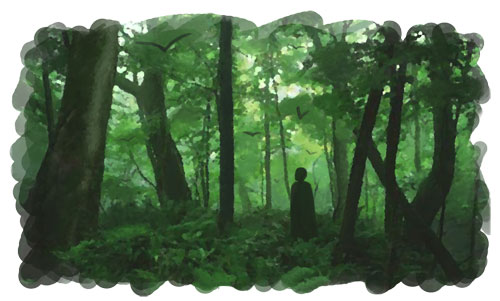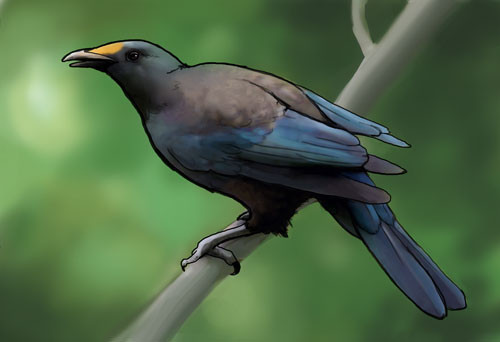
New Zealand is an island of birds. When the first human settlers arrived here, some 1000 years ago (the exact date is a matter of much politically charged controversy) – they found an island without any native mammals. Birds occupied some of the ecological niches that mammals have filled in other parts of the world: there was the moa, a large flightless bird somewhat similar to an ostrich. Due to his size, he became a favourite prey for human hunters, and eventually went extinct.
New Zealand’s national bird, the kiwi, survived into our days. Another flightless bird who roams the forest floor, he is quite similar in size and looks to a rabbit. Even his feathers have a fur-like look.
Not surprizingly, birds play a large part in the legends of the Maori people. There isn’t any particular single magical bird creature: with the possible exception of Kurungaituku, the bird woman who appears in the story of Hatupatu, and who keeps the hero prisoner until he can manage his escape. But she seems to belong only to this one particular story.


There are plenty of stories, though, which feature actual New Zealand birds. Perhaps the best known is the story of how Piwaiwaka (or Piwakawaka, the fantail) ruined Maui’s attempt to destroy death. Because of this association, Piwaiwaka is seen as an omen for an imminent death by the Maori people. You don’t want him to fly into your house!
Maui is the trickster god of Polynesian legend who fished up the island of Aotearoa, slowed the sun down in the sky, and stole the fire. When he went into the Underworld to seek out Hinenuitepo, the goddess of death, he was accompanied by four birds: one of them was Piwaiwaka. Maui’s plan was to enter the body of Hinenuitepo through her vagina and come out of her mouth, which would apparently have killed her. In order to achieve this, he transformed himself into a worm. Piwaiwaka thought this whole procedure so funny, that he could not help himself from laughing out loud. Hinenuitepo woke up, and crushed Maui between her thighs. This was the end of the hero, and the rest of us humans still have to die as well.




The national bird, the kiwi, also features in a legend. Tane, the god of the forest, noticed that his children the trees were looking sickly: they were being eaten by too many bugs. Take implored the birds of the forest to help him: first he asked Tui, then he asked Pukeko, then he asked some others, but every bird had a reason why they could not come down to the forest floor. Finally he asked Kiwi. And even though Kiwi also loved the light of the tree tops, and even though he also wanted to stay with his family, he instantly agreed to take on this task – even though it also meant that he would lose his wings and his colourful plumage.
But to this day, Kiwi is the best beloved bird in New Zealand. A white kiwi is particularly auspicious: when one hatched at a bird sanctuary near where I live a year or two ago, it made the national headlines!




Some stories about birds in New Zealand could well be legends: the Takahe, another flightless bird, was thought to be extinct since the late 19th century, but a small remaining population was eventually rediscovered in 1948. Since then, the population of those birds has seen a slow but steady increase, due to careful breeding efforts, and introducing the bird to other areas of New Zealand.
Kereru, the wood pigeon, once used to roam the forests in huge flocks which would darken the air. Also a popular food bird, the numbers went down and down. Today, they can still frequently be spotted, but usually as single birds or pairs: the huge flocks, unfortunately, are a thing of the legendary past.
Ruru, the morepork, and Tui are some of the best known and most common birds: the ruru’s call is a familiar part of the soundscape of a New Zealand night, and the tui bird often comes to visit the gardens, feeding on the nectar of kowhai and pohutukawa trees.






All images are copyright the respective artists, and may not be reproduced without permission.










